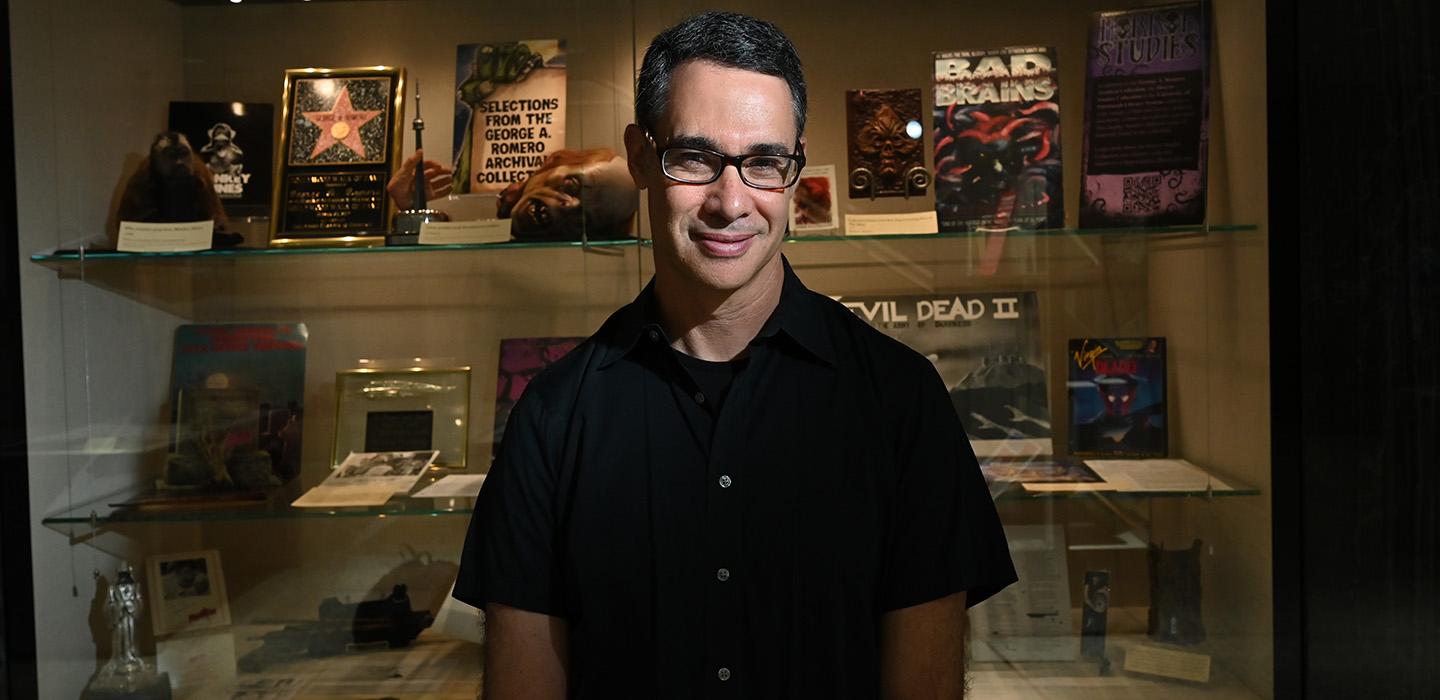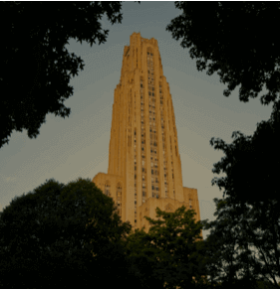
Subscribe to Pittwire Today
Get the most interesting and important stories from the University of Pittsburgh.When most people think of Pittsburgh, they think of sports, Mr. Rogers, our 400-plus bridges, but not horror. At least not at first.
But the Steel City is home to some of the most iconic moments and makers in horror — Hannibal Lecter’s jail cell in Soldiers and Sailors Memorial Hall and Museum, Richard Gere researching Mothman at the Mellon Institute and, of course, George A. Romero, the “Godfather of Horror” himself.
Now, the University of Pittsburgh Kenneth P. Dietrich School of Arts and Sciences has launched a new home for the genre in the ’Burgh in Pitt’s Horror Studies Center.
It’s headed up by Adam Lowenstein (pictured above), professor in the Dietrich School’s Department of English and Film and Media Studies program, who has been working like the living dead with collaborators at Pitt and beyond for years to establish this first-of-its-kind interdisciplinary Horror Studies Center.
Early in his time at Pitt, Lowenstein met Romero, who moved to Pittsburgh in the late 1950s to study graphic arts at Carnegie Mellon University. He went on to direct some of horror’s most notable films — “Night of the Living Dead,” “Dawn of the Dead,” “Day of the Dead,” and others — right here in the Steel City.
After his passing in 2017, Romero’s wife, Suzanne Desrocher-Romero, and daughter, Tina, couldn’t think of a better way to honor the esteemed filmmaker than by entrusting the University and Lowenstein with Romero’s archival collection. In 2019, Pitt acquired the George A. Romero Collection, filled with scripts, posters and props from his films. This positioned the University to eventually become the premier research facility on all things horror and set the stage for this unique center.
The Horror Studies Center consists of five pillars — read more about their contributions below:
- The Horror Studies Collection in the University Library System’s Department of Archives and Special Collections, which was established in 2019 with the Romero collection acquisition.
- A Horror Genre as Social Force Scholar Community in Pitt’s David C. Frederick Honors College, which focuses on horror’s relation to social issues.
- The Global Horror Studies Archival and Research Network, which includes partnerships with institutions worldwide, along with close ties to the University Center for International Studies and Pitt Global.
- The Horror Studies Working Group, a collaborative team of Pitt faculty, students, staff and community members that has helped launch horror studies at the University.
- The George A. Romero Foundation, a nonprofit organization dedicated to building on the artistic legacy of the famed Pittsburgh horror filmmaker.
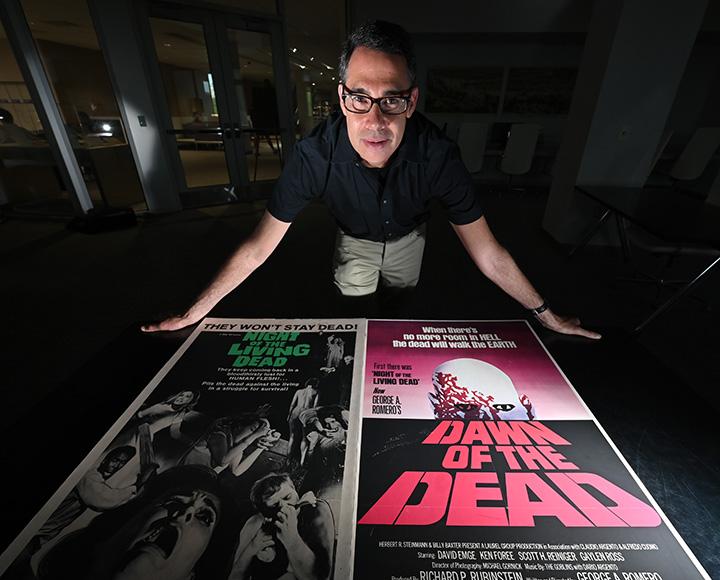
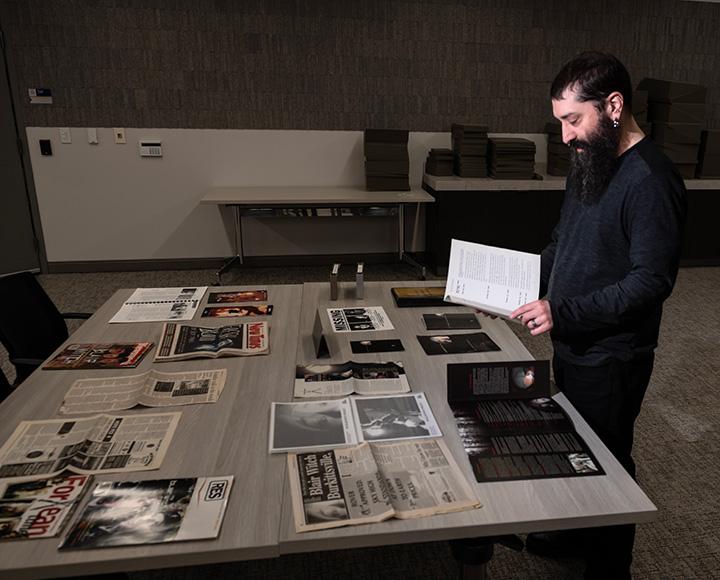
Horror Studies Collection
Since 2019, this University Library System (ULS) collection, coordinated by Ben Rubin, has expanded by adding first edition copies of “Dracula,” “Frankenstein” and the works of Edgar Allan Poe; draft scripts from John Carpenter and Wes Craven as well as films like “Jaws,” “Dracula,” and “Hellraiser”; and the literary papers of authors such as Linda D. Addison, Gwendolyn Kiste, Daniel Kraus, Elizabeth Massie, Tim Waggoner and L. Marie Wood. The collection also boasts an array of horror pulp magazines and comics, special edition and fine press books, the records of the Horror Writers Association and, most recently, the archive for “The Blair Witch Project.”
Rubin, a member of the Horror Writers Association, said when he’s curating, he’s not always looking for final drafts: He wants items that show development.
“These materials serve as a scholarly resource to document the history of the genre and illuminate its often hidden social and cultural significance,” he explained. “It also captures the creative process to help inform and inspire aspiring writers and filmmakers.”
Materials from the Department of Archives and Special Collections are open to the Pitt community and the public, with some already on display in the Hillman Library.
ULS Director Kornelia Tancheva said when she started working with Lowenstein and Desrocher-Romero to acquire the Romero Collection, she faced doubt from some people but saw what others didn’t at the time.
“Horror studies is something that is applicable well beyond just literature, literary study, cultural studies or film studies,” said ULS Director Kornelia Tancheva, who worked on acquiring the initial Romero Collection in 2019 alongside Lowenstein and Desrocher-Romero. “It has sociological aspects that pretty much permeate every humanistic, social sciences discipline.”
Global Horror Studies Archival and Research Network
According to Tancheva, Lowenstein’s tenacity — along with support from Jeff Whitehead and Allyson J. Delnore at the University Center for International Studies (UCIS) — has played a key role in taking Pitt’s horror studies initiatives worldwide.
“Horror is a universal experience with a global vocabulary, but its expression can vary significantly across cultures. The Horror Studies Center brings together Pitt’s interdisciplinary expertise in international studies to look at how individuals understand and how they process their own particular societal and cultural anxieties through the genre,” said Allyson J. Delnore, interim executive director of UCIS.
“This program is a culmination of many long-standing global horror collaborations fostered by a number of our centers, including the Global Studies Center and Asian Studies Center. It is a natural partnership, and we couldn't be more pleased.”
Horror Genre as Social Force
David C. Frederick Honors College Dean Nicola Foote, along with Lowenstein and Whitehead, spearheaded this scholar community, a unique opportunity for Pitt honors students to enhance their research and creative skills. With the launch of the Horror Studies Center, that work will be expanded even further.
“The Frederick Honors College has been proud to help expand horror studies research through the Horror Genre as Social Force Scholar Community for more than five years, giving our students hands-on opportunities to create their own horror films, novels, and other projects,” Foote said. “I was privileged to be part of the team that advanced the successful proposal for the center, and I could not be prouder to see this vision come to fruition.”
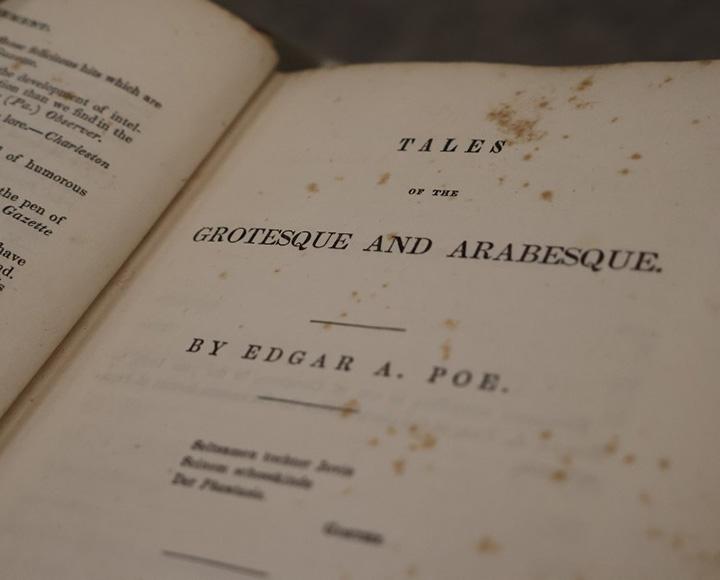
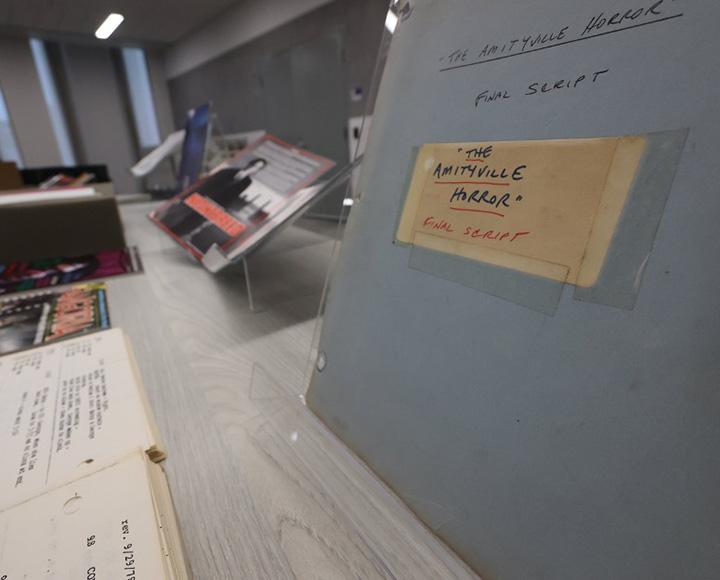
George A. Romero Foundation
Established in 2018 by Suzanne Desrocher-Romero, the George A. Romero Foundation aims to empower a new generation of filmmakers. Desrocher-Romero said she has always been keen on promoting horror’s legitimacy through education and study and carrying on her husband’s legacy. She calls this new center their “North Star” and says she hopes it attracts researchers from all over the world.
Tina, Romero’s daughter, followed in her father’s footsteps. She’s taken on her own brand of zombies with her debut film, “Queens of the Dead,” which will be released this month. She said that while her dad’s films were entertaining, they also served as valuable teaching tools.
“My dad was king of that. He was so good at doing entertainment with social commentary. You know, getting people to eat their spinach while having a lollipop at the same time.”
As for Romero, his widow thinks he would be proud of everything they’ve accomplished with Pitt’s new center: “He would think it's the cat’s meow, because I think his work was often considered B movies, he was often dismissed. [And] as you know, the archive is full of scripts and his work is all there, and I just think that he would feel like this was legitimate. He was an intellectual, he was the smartest man I’ve ever known, and it would have appealed to him intellectually, 100%.”
Learn more about the Horror Studies Center.
Photography by Aimee Obidzinski, except as noted


